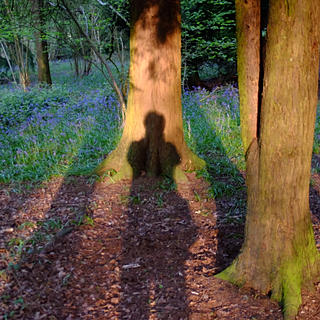As yet untitled: a photography project on community and belonging in the time of COVID
- PCWhitehouse
- Nov 27, 2021
- 8 min read
Updated: Dec 21, 2021
For some time now I’ve been planning a photography project focusing on life in the shadow of lockdown. The plan is to feed this work into a larger project which seeks to share stories about life and community in my adopted city of Leicester, particularly as we continue to adapt to this new way of life.
This is a significant moment in our time and we need to tell these stories in a variety of different ways, if only to help us better reflect and understand our own personal experiences of the pandemic. There's a poignant observation from the philosopher louis Althusser about how art doesn't give us answers it just helps us ask better questions, teasing at those things that linger just out of sight and which sometimes reuire the creation of a new vocabulary before we can begin to comprehend their larger meaning. It is an idea that I return to again and again when I think about my experiments in photography, especially n those moments when I feel that I want to capture something without knowing why. What I know to be something approaching a universal truth is that the stories we tell each other in times of hardship are vital and that some of those stories work best when they cross boundaries, challenge us in surprising ways, and benefit from retelling through different media, be that the written word or something altogether more visual.
When I think about this project, still very much in the developmental stage, I often recall something the Anishinaabe author Gerald Vizenor once told me when we had a chance to speak following a literary conference in Geneva sometime back in 2010:
“If you can’t tell a good story then you won’t make it through the winter.”
If that isn’t the direct quote then it is a good approximation, which in the context of our conversation was meant as a reflection on the power of storytelling as a means of keeping the community together during hard times. Vizenor went on to talk about the vital importance of storytelling as a way to remind communities of the all-important ties that bind them together, which more often than not is born of a familiarity that is strengthened through the act of retelling and passing those story forms onto the next generation who will change the names and add their own signatures to the piece, but otherwise retains a connection to the past, the land, its wildlife that can become sacred in its significance. This may sound rather grandiose, but the practice can be as simple as sharing little annedotes about familiar characters that occupy our real day-to-day lives, comparing notes on how we have adapted to recent changes and perhaps most importantly finding the strength of will to laugh at those things we can’t control. Put another way, that communal sense of storytelling, the catch-up over a brew, the common threads that stitch us together into little groups are what help us through those most difficult of winters.
And COVID has certainly presented us with our own collective winter of discontent and is likely to continue doing so, the economic devastation plain to see, accented in the shuttered windows of highstreet department stores and the empty trestles at once bustling markets.
My intentions, such as they are, is to hold up a camera to these events. Using a combination of analogue and wet plate photography techniques I will, over the coming months and possibly years build a mass of work that speaks to, challenges and contradicts the principals highlighted above.
Leicester City Market, Friday 26th November 2021

With the approach of Storm Arwen and weather suddenly turning brisk and bracing I decided to walk around the city centre with my 1970s Mamiya C330 Twin Lens Reflex (TLR) camera. It’s a curious looking thing and something of an oddity with it’s two lens and extendable bellows, but I love shooting with it and had been advised by my friend, the Hawaii-based photographer Floyd Takeuchi, to go with a TLR since people are often less guarded when they see someone snapping away with a classic camera.
From a photographer’s perspective using the Mamiya did feel less intrusive with several interested people stopping me to ask questions about the camera which I was happy to answer. One man talked at length about how he and his wife loved to shop at the market and how it had been a community lifeline throughout the pandemic but also a welcome alternative to online and big brand alternatives.
“They just can’t be beaten on price,” he said, “and you don’t have all that terrible packaging to deal with, it's so much better for the environment. I just ask them to put the apples and whatnot straight into my bag.” He opened a large cotton bag to show me his selection of Granny Smiths and field mushrooms, clearly proud of the morning’s haul.

The Mamiya's large and rather conspicuous profile suited my purposes well since I wasn’t trying to hide what I was doing and had decided beforehand that I would always ask permission before making a portrait. “Well seeing as you asked so nicely!” was the response of a lady selling eggs. It was much the same response from the other market sellers whose well-practiced patter can make a complete stranger feel like a compatriot with a breezy exchange of words and an unrestrained smile on a frosty November morning.
Several asked why I was taking photographs and I did my best to explain the project. One lady, who was selling a combination of pumpkins and other large squashes, nodded along as I outlined my intentions. “It’s been rough alright," she said, "no denying that. Used to be twice as many [stalls] on a Friday.” Other stallholders made similiar observations and it was hard not to feel a once lively quarter of the town had been diminished.
Heading away from thecovered market I bumped into someone selling the Big Issue. “You look like David Bailey with that camera!” she enthused, pulling me in close to make a quick sale. As I searched for my wallet we struck up an easy conversation about the hardships facing those without financial security and the hard grind of selling the iconic magazine. “Lots of people smile and walk by, but nobody’s buying,” she lamented, “and it’s cold...got to keep the energy high!” I wanted to ask more questions but also didn’t want to distract her from her business so I thanked her and moved on.
A little farther down the lane I stopped to talk to John who was enjoying a cup of tea and a bacon sandwich on one of the little rickety tables outside a streetside café. He was heavily bundled and struck me as an interesting chap, so I chanced a rejection and asked if I could take his photograph. He was hesitant at first, as I’m sure I would be if suddenly approached on the street while trying to get my morning coffee fix, but once we have introduced ourselves he quickly opened up. He told me that back in the day he had been an engineer, the peak of his career being a stint working on a large project that would eventually find its way into the Challenger space shuttle mission which as the world knows would tragically explode 73 seconds into its maiden flight in January of 1986. “I quit the next day,” John said, “I just didn’t want to be part of anything to do with that tragedy.”
John was fascinating and in great spirits despite the biting cold. He told me that his father had spent a small fortune on a colour TV back in the early 70s or late 1960s and how as a lad he had crowded around the set to watch the great pop musicians of the day, inspiring a lifelong love of music whcih included a notable emphasis on punk. Reaching into a plastic bag John produced a vintage Radio Times from the era and posed for a picture with this in his left hand while saluting with Vs with his other hand. “Anarchy in the UK!” he proclaimed, a huge grin on his face. Frustratingly the film must had jammed in my camera since this shot, and my previous shot of the Big Issue seller and several others from the market were lost.
Examining my camera John said that he had once owned an expensive rangefinder and for a time had worked for a company that made precision lenses. He explained that once armed with his new camera he had asked a photographer friend what he should photograph. "Take pictures of things that were disappearing" had been the advice.
“What an excellent suggestion,” I said, “what kind of stuff did you photograph?”
“Mostly this place,” he said, waving an arm around to indicate ‘the city’- “you’d be amazed how much it’s changed since the 60s and 70s. I still have the prints somewhere.”
As we spoke, John circled back to point out that we, that is to say "people" need humour to survive, which again put in me mind of the Vizenor quote about getting though hard winters. Without stories and the ability to find humour in the absurd we are rather naked, and I sensed that this was the larger point or at least part of the larger point that John was tilting at. The comedy and musical heroes of his youth were top most in his list of treasured things, which I suppose are key parts of our personal stash of survival stories.
“My first ever record," he went on, "was an audience with Spike Milligan – he's great British comic if you don't know. His headstone reads, ‘I told you I was ill!' Ha! I part-exchanged it for Never MInd the Bollocks by the Sex Pistols."
“I think I knew that that about Spike Milligan,” I said, vaguely recalling an episode of This is your life or something like it from the 90s in which Milligan called the host, Johnathan Ross, a grovelling bastard after a long and perhaps overly sincere introduction.
“Laughter gets you through," John said again, dabbing at a spot of ketchup with the crust of his bacon sandwich, "all those ex-army guys had to find the humour. Obvious when you think about it. You should talk to some of them.” I said that I would.
Before we parted I promised that if I made a print of his portrait I would leave a copy with the café for him to collect next time he passed by. I'm gutted that his one of the of the pictures I lost to the camera malfunction, but such is the risk of using vintage equipment.
As photography outings go it was a positive one and I especially enjoyed meeting John who said he would buy me a pint next time our paths crossed. “I’m something of a legend around here!” he yelled as walked away. I don’t doubt it.
From the deep abiding smile of the lady selling fresh fruit and vegetables to the friendly joshing of the Big Issue seller and John’s artful meanderings, one connective through-line knitting these brief snapshots together is simply that – a warm smile on a cold day. When asked if I could take their picture they all chose to look directly into the lens and smile, as a friend would, and as is so often the case in such moments we all searched within ourselves for something humorous or playful to say, a slightly nervous but affectionate impulse to humour.
I wrote this down as the lesson of the day.





















Comments